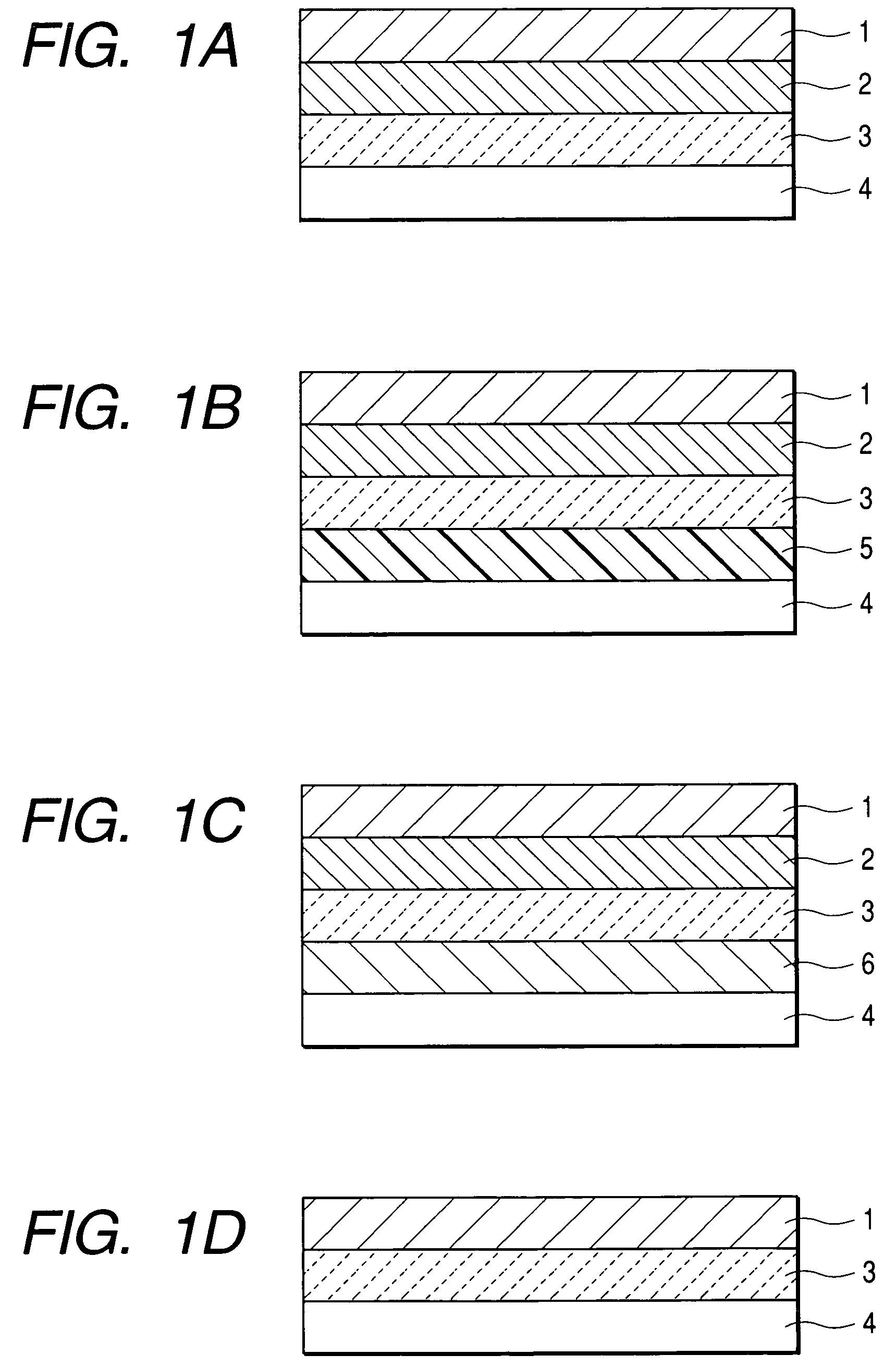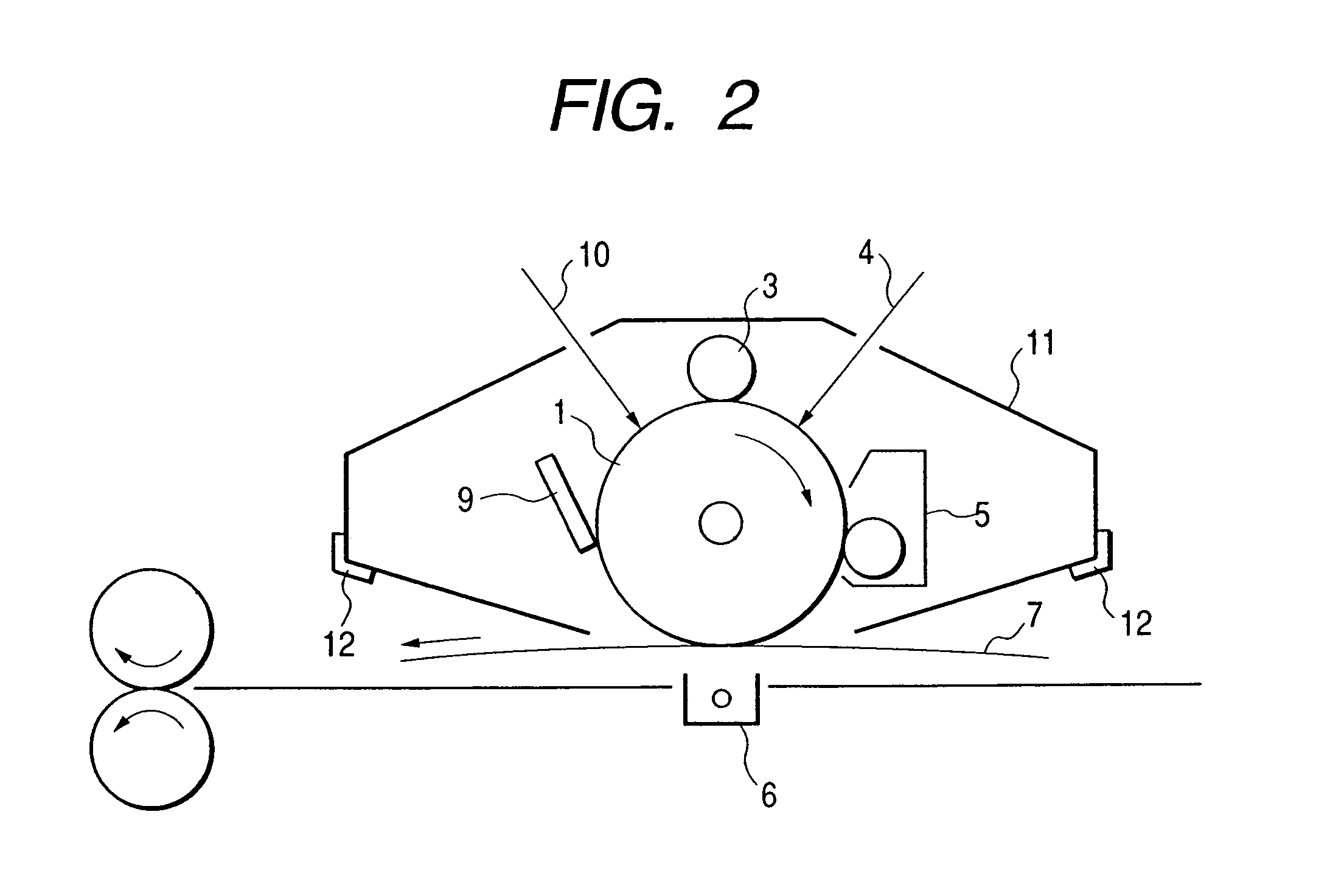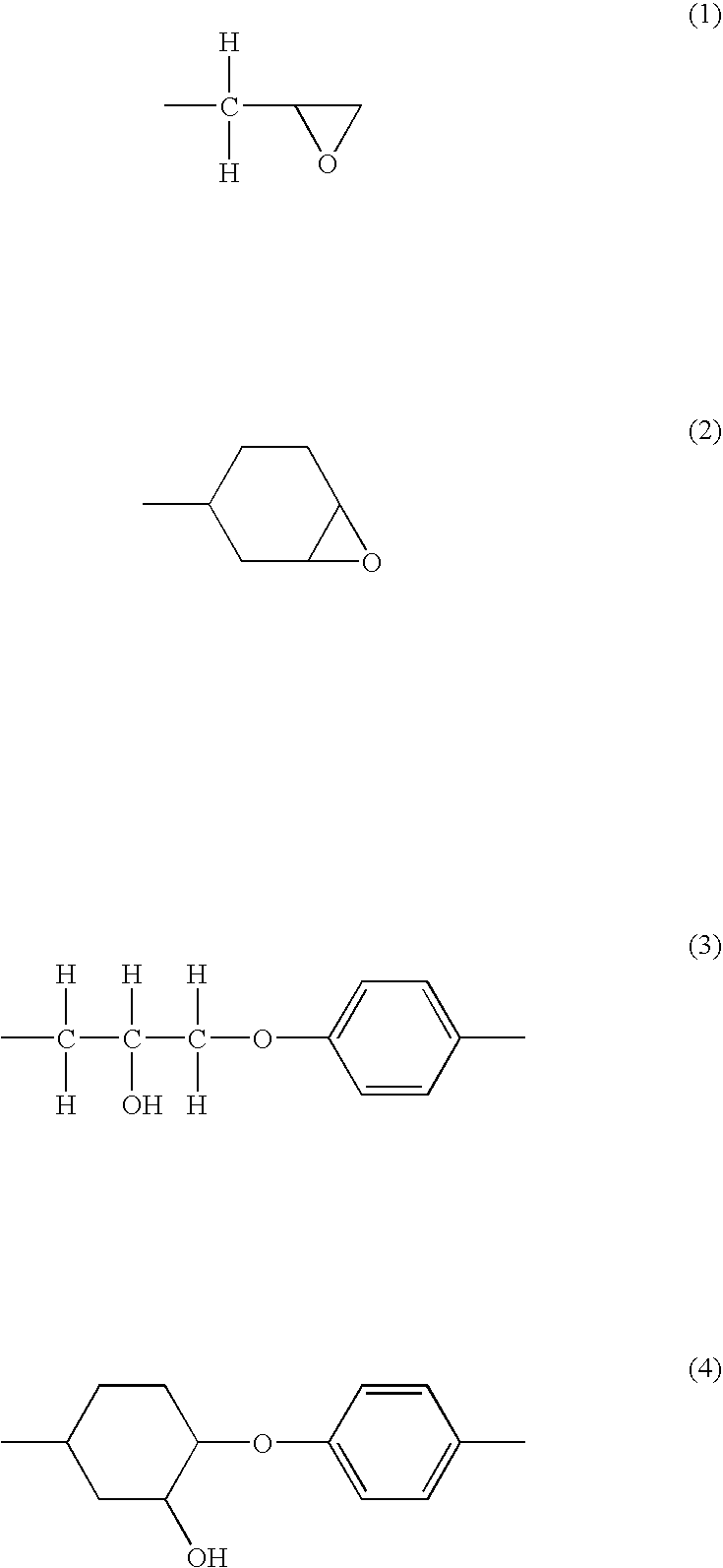Furthermore, at the time of repeating the cleaning of the remaining toner, there occurs a problem that the toner adheres to the photosensitive member surface and cleaning with a blade causes scraping of the photosensitive member surface by the blade, and hence the photosensitive member surface is required to have such characteristics as slidability, releasability, and antistaining property.
More specifically, a
fluorine-based resin alone is low in
hardness so it can hardly suppress the scratch generation, and it is scarcely soluble in common solvents so formation of its film is not easy.
On the other hand, there is reported an example in which for the photosensitive member, used is highly hard materials such as a cured
silicone resin taking
advantage of the high reactivity of alkoxysilane; however, these resins are not satisfactory in such aspects as slidability, electric characteristics at high humidities, and releasability.
Furthermore, these cured materials are highly reactive to the
hydroxy group so that there are some constraints on the
solvent for use in photosensitive layer
coating, and additionally the curing reaction slowly proceeds in these materials under the effect of the contained
moisture so that the stability of the
coating solution is poor, which is problematic from the viewpoint of the productivity of the photosensitive member.
Accordingly, there have been problems that the
transfer efficiency is degraded due to the elevated surface free energy and the image blurring is caused by
moisture absorption.
In this connection, if the
surface layer has no function for conducting charge transfer, the charge accumulation occurs in the interior of the photosensitive layer in such a way that the repetition of the electrophotography process of charging-exposing results in the elevated residual potential, leading to the
image quality degradation.
For example, when curing is made by adding a charge transport material to alkoxysilanes, the charge transport material and the
siloxane component are frequently poor in compatibility with each other, and when a charge transport material is added to a resin having a high polarity unit such as urethane resin, the charge mobility due to the charge transport material is lowered, actually leading to unsatisfactory electrophotographic characteristics.
Furthermore, among the thermosetting resins, various materials are not compatible with mere application of heat treatment, but need the addition of curing catalysts such as curing accelerators and
polymerization initiators.
However, when such a curing catalyst remains in the cured film, possibly there occur such an
adverse effect that the charge transfer is inhibited by even a small amount thereof, or the electric resistance of the cured film is degraded.
On the other hand, a coating material added with a curing catalyst tends to undergo slowly
processing reaction even at ambient temperature, resulting in degradation of the stability of the coating material, which leads to an
adverse effect that the
mass production of
coating materials and the storage thereof become a hard task.
Additionally, main schemes for the electrophotographic photosensitive member involve
electric discharge, among which a charging scheme, involving
discharge in a thin gap between the electrophotographic photosensitive member and the charging member applied both with a
DC voltage and with an AC
voltage, is the one excellent in charging stability among the contact charging schemes, but involves a phenomenon that the surface composition of the electrophotographic photosensitive member is destroyed in an oxidatively deteriorated manner, leading to an elevation of the surface free energy causing the
transfer efficiency degradation.
Furthermore, when a thermosetting resin is used, the abrasion amount of the photosensitive layer is small, and hence the destroyed material in an oxidatively deteriorated manner possibly causes a problem of image blurring due to
moisture absorption.
Additionally, in general, when the surface layer comprising a cured resin is provided on the photosensitive layer comprising a thermosetting resin, if, as is the case for the surface layer comprising a
fluorine-based resin as the cured resin, the cured resin is totally different from the photosetting resin in
chemical composition, the adhesiveness of the surface layer to the photosensitive layer is poor so that a part of the photosensitive layer may sometimes be peeled when used over a long period of time in the electrophotographic process, resulting in an
adverse effect of generating deficient images.
Additionally, in general, the more the crosslinking density of cured resins is increased, the harder the cured resins are surely, but concurrently the more brittle the cured resin is.
Furthermore, such curing resins lead to extreme increase in the
surface roughness of the electrophotographic photosensitive member in the long term course of the use thereof, sometimes causing adverse effects on the images, and accordingly the fact is such that no satisfactory materials have been obtained in
adaptation of curing resins to the surface layer.
H10-228126 discloses an example in which the surface
layers of the photosensitive members are made to contain a charge transport material containing phenolic hydroxy groups and hydroxyalkyl groups; however, even these photosensitive members cannot meet the recent demands for high durability,
high productivity and high
image quality, and the fact is such that all the items including the
mechanical strength, residual potential, productivity and the like are not yet sufficiently satisfied.
 Login to View More
Login to View More  Login to View More
Login to View More 


